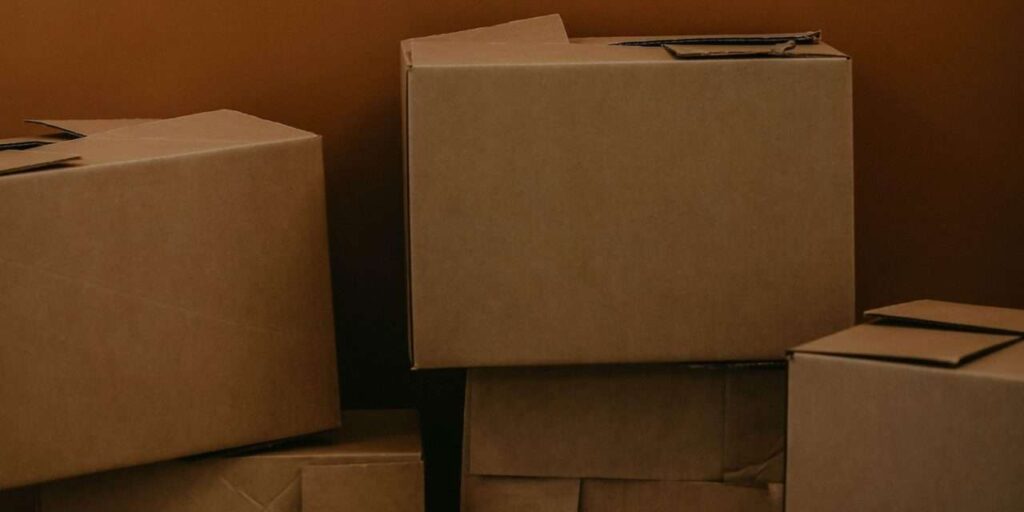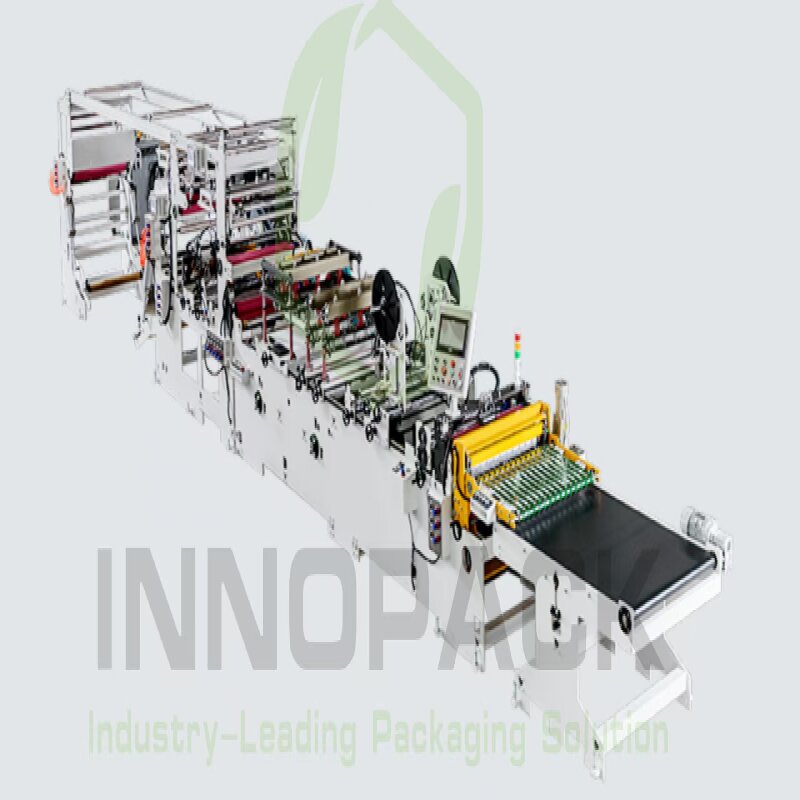ចង់ដឹងពីតម្លៃវេចខ្ចប់ក្រដាស? នេះគឺជាការវិភាគច្បាស់លាស់នៃកម្មវិធីបញ្ជាតម្លៃ ជួរធម្មតា និងវិធីឆ្លាតវៃដើម្បីកាត់បន្ថយការចំណាយសរុបដោយមិនប៉ះពាល់ដល់ការការពារ។

ហេតុអ្វីបានជាតម្លៃវេចខ្ចប់ក្រដាសប្រែប្រួលយ៉ាងទូលំទូលាយ
នៅក្នុងពាណិជ្ជកម្មអេឡិចត្រូនិចនាពេលបច្ចុប្បន្ននេះ ក្បាលដីភាគច្រើនដឹកជញ្ជូនក្នុងដំណោះស្រាយក្រដាស - អ្នកផ្ញើសំបុត្រ ប្រអប់សំបុត្រ ក្រដាស់រុំ និងការបំពេញទុកជាមោឃៈ។ ប៉ុន្តែតម្លៃនៃដំណោះស្រាយមិនដែលមានទំហំមួយសមនឹងទាំងអស់នោះទេ។ វាផ្លាស់ប្តូរជាមួយនឹងតម្លៃផលិតផលរបស់អ្នក ភាពផុយស្រួយ និងអាយុកាលធ្នើ។ បទពិសោធន៍ unboxing ដែលត្រូវការ; គោលដៅបោះពុម្ព និងនិរន្តរភាព; បូករួមទាំងកម្លាំងពលកម្ម ស្វ័យប្រវត្តិកម្ម និងការដឹកជញ្ជូន។ ខាងក្រោមនេះគឺជាក្របខ័ណ្ឌសង្ខេបដើម្បីប៉ាន់ប្រមាណតម្លៃនៃការវេចខ្ចប់សរុបរបស់អ្នក និងធ្វើឱ្យវាប្រសើរឡើងជាមួយនឹងទិន្នន័យ។
ជួរតម្លៃធម្មតាក្នុងមួយឯកតា (សេចក្តីយោងរហ័ស)
| ទម្រង់ | ការប្រើប្រាស់ធម្មតា។ | តម្លៃឯកតា (USD) | កំណត់ចំណាំ |
| អ្នកផ្ញើក្រដាស Kraft | សម្លៀកបំពាក់, ទំនិញទន់ | $0.10–$0.50 | ស្រាល; ទំងន់ DIM ទាប; ការការពារកំទេចមានកំណត់ |
| ប្រអប់សំបុត្រក្រដាស | គ្រឿងសម្អាង គ្រឿងតូចៗ | $0.20–$0.75 | បន្ទះសរសៃក្រដាស; យ៉ាងទូលំទូលាយអាចកែច្នៃឡើងវិញបាន។ |
| ប្រអប់ជ័រ RSC (ជញ្ជាំងតែមួយ) | ទំនិញទូទៅ | $0.30–$2.00+ | តម្លៃកើនឡើងតាមទំហំ ថ្នាក់ក្តារ និងបរិមាណបញ្ជាទិញ |
| ប្រអប់ជញ្ជាំងពីរជាន់ | ផុយស្រួយ, វត្ថុធ្ងន់ | $0.80–$3.50+ | ការការពារខ្ពស់; ទម្ងន់ DIM ធ្ងន់ជាង |
| ក្រដាស់បំពេញ/រុំ | ការទប់ស្កាត់ & ការតោង | $0.02–0.25 ដុល្លារក្នុងមួយកញ្ចប់ | អាស្រ័យលើប្រវែងចំណីក្នុងមួយកញ្ចប់ |
| បោះពុម្ពផ្ទាល់ខ្លួន / ម៉ាក | ការដោះប្រអប់ពិសេស | +$0.10–$1.00 លើក | ជំរុញដោយពណ៌, គ្របដណ្តប់, MOQ |
កម្មវិធីបញ្ជាតម្លៃសំខាន់ៗសម្រាប់ម៉ូដែល
- តម្លៃផលិតផល៖ វត្ថុមានតម្លៃខ្ពស់បង្ហាញអំពីភាពត្រឹមត្រូវនៃសម្ភារៈដែលរឹងមាំជាងមុន និងការបោះពុម្ពម៉ាកយីហោ។ ការចំណាយលើការវេចខ្ចប់បន្ថែមការពាររឹម និងកាត់បន្ថយការត្រឡប់មកវិញ។
- ភាពផុយស្រួយ៖ កញ្ចក់ សេរ៉ាមិច និងគ្រឿងអេឡិចត្រូនិច ត្រូវការថ្នាក់ក្តារ បន្ទះបញ្ចូល ឬក្រណាត់រុំដែលផលិតឡើងខ្ពស់ជាងមុន - ការបង្កើនសម្ភារៈ និងតម្លៃពលកម្ម។
- អាយុកាលធ្នើ៖ អាហារ គ្រឿងសម្អាង ឬឱសថស្ថានអាចត្រូវការថ្នាំកូត របាំង របាំងបិទបាំង ឬការគ្រប់គ្រងសំណើម ដែលបន្ថែមថ្លៃដើម និងផ្លាស់ប្តូរការកែច្នៃឡើងវិញ។
- ទំហំ និងទម្ងន់៖ ប្រអប់ធំជាងមុនបង្កើនការប្រើប្រាស់ក្រដាស និងការដឹកជញ្ជូន (ទម្ងន់ DIM)។ ការកំណត់ទំហំត្រឹមត្រូវ ច្រើនតែសន្សំបានច្រើនក្នុងការដឹកជញ្ជូន ជាងតម្លៃសម្ភារៈ
- បោះពុម្ព និងបញ្ចប់៖ ពណ៌ 1-2 នៅលើ kraft គឺសន្សំសំចៃ; ការបោះពុម្ពពហុពណ៌ ឬការបោះពុម្ពខាងក្នុងពេញលេញ បង្កើនការចំណាយ និងពេលវេលាដឹកនាំ។
- បរិមាណការបញ្ជាទិញ & MOQs: បរិមាណកាន់តែខ្ពស់កាត់បន្ថយតម្លៃឯកតាតាមរយៈការរំលោះការដំឡើង និងទិន្នផលក្រុមប្រឹក្សាភិបាលកាន់តែប្រសើរ។
- ការងារទល់នឹងស្វ័យប្រវត្តិកម្ម៖ ការវេចខ្ចប់ដោយដៃមានភាពបត់បែន ប៉ុន្តែពឹងផ្អែកលើកម្លាំងពលកម្ម។ ប្រព័ន្ធក្រដាសស្វ័យប្រវត្តិកាត់បន្ថយពេលវេលាប៉ះតាមលំដាប់។
តើការវេចខ្ចប់ក្រដាសមានតម្លៃថោកជាងផ្លាស្ទិចទេ?
វាអាស្រ័យលើ SKU និងនិយមន័យនៃ "ថោកជាង" ។ លើតម្លៃសម្ភារៈសុទ្ធ ប្លាស្ទិកទំនិញ (ឧ. ប៉ូលីម៉ែល) អាចមានតម្លៃតិចជាងក្នុងមួយឯកតា។ ទោះជាយ៉ាងណាក៏ដោយដំណោះស្រាយក្រដាសច្រើនតែឈ្នះលើ ថ្លៃដើមដឹកជញ្ជូនសរុប នៅពេលអ្នករួមបញ្ចូល៖
- ការបង្កើនប្រសិទ្ធភាពការដឹកជញ្ជូន / DIM៖ ប្រអប់សំបុត្រក្រដាសទំហំខាងស្តាំ ឬប្រអប់ស្វ័យប្រវត្តិអាចកាត់បន្ថយទម្ងន់វិមាត្រ និងសន្សំសំចៃលើការដឹកជញ្ជូនច្រើនជាងការសន្សំឯកតារបស់ប្លាស្ទិក។
- ការខូចខាត/ត្រឡប់មកវិញ៖ corrugated ជាមួយនឹងការបញ្ចូលត្រឹមត្រូវអាចកាត់បន្ថយការបែកបាក់ធៀបនឹងអ្នកផ្ញើសំបុត្រដែលទន់ខ្សោយ - ការពាររឹម។
- ម៉ាក និងការអនុលោមតាម៖ ក្រដាសតម្រឹមតាមគោលការណ៍ណែនាំអំពីនិរន្តរភាពរបស់អ្នកលក់រាយជាច្រើន និងការរំពឹងទុករបស់អតិថិជន ធ្វើអោយប្រសើរឡើងនូវការបំប្លែង និងការរក្សាទុក។
- ចុងបញ្ចប់នៃជីវិត៖ ការកែច្នៃឡើងវិញរបស់ក្រដាសអាចកាត់បន្ថយថ្លៃសេវានៅក្នុងទីផ្សារជាមួយនឹងការទទួលខុសត្រូវរបស់អ្នកផលិតបន្ថែម (EPR) ឬការគិតថ្លៃដែលបានកែប្រែដោយអេកូ។
សម្រាប់សម្លៀកបំពាក់ ឬទំនិញទន់ អ្នកផ្ញើក្រដាសអាចមានតម្លៃប្រកួតប្រជែង ឬថោកជាង (អរគុណចំពោះការសន្សំការដឹកជញ្ជូន)។ សម្រាប់វត្ថុរាវ ឬវត្ថុធ្ងន់ៗ ផ្លាស្ទិចអាចនៅតែទាបជាងវត្ថុធាតុដើម ប៉ុន្តែអាចបាត់បង់ដោយសារការខូចខាត ឬការអនុលោមតាមច្បាប់។ យកគំរូសេណារីយ៉ូទាំងពីរដើម្បីសម្រេច។
វិធីកាត់បន្ថយតម្លៃវេចខ្ចប់ក្រដាសដោយមិនប្រថុយនឹងការខូចខាត
- ទំហំស្តាំយ៉ាងខ្លាំងក្លា៖ កាត់បន្ថយចន្លោះទទេ; ផ្លាស់ទី SKUs ដែលមានសិទ្ធិពីប្រអប់ទៅប្រអប់សំបុត្រក្រដាស។
- ថ្នាក់ក្តារផ្គូផ្គងទៅនឹងភាពផុយស្រួយ៖ ធ្វើឱ្យប្រសើរឡើងតែកន្លែងដែលទិន្នន័យធ្លាក់ចុះធានាវា; ជៀសវាងការប្រើជ្រុល។
- បង្រួបបង្រួម SKUs៖ ការកំណត់ និងទំហំតិចជាងមុន ធ្វើអោយប្រសើរឡើងនូវទិន្នផលក្រុមប្រឹក្សាភិបាល និងចរចារ MOQ កាន់តែប្រសើរ។
- ប្រើការបោះពុម្ពយ៉ាងឆ្លាតវៃ៖ ក្រដាសពណ៌មួយនៅខាងក្រៅ ប៉ះម៉ាកនៅខាងក្នុង (ឬនៅលើកាសែត/ស្លាក) ដើម្បីរក្សាការចំណាយធ្លាក់ចុះ។
- ការវេចខ្ចប់ដោយស្វ័យប្រវត្តិ៖ ក្រដាសបំពេញទុកជាមោឃៈតាមតំរូវការ និងការកាត់ប្រអប់ដោយស្វ័យប្រវត្តិនូវកម្លាំងពលកម្មក្នុងមួយវិនាទីតាមលំដាប់តាមមាត្រដ្ឋាន។
ប្រសិនបើអ្នកកំពុងធ្វើមាត្រដ្ឋាន, គ្រឿងម៉ាស៊ីន innopack ផ្តល់ជូននូវម៉ាស៊ីនវេចខ្ចប់ក្រដាសដែលផលិតបានយ៉ាងលឿននូវប្រអប់ក្រដាសទំហំត្រឹមត្រូវ រុំ និងការបំពេញទុកជាមោឃៈ ធ្វើអោយប្រសើរឡើងនូវលំហូរ និងការការពារ។ ស្វ័យប្រវត្តិកម្មកាត់បន្ថយចំណុចប៉ះដោយដៃ រក្សាដង់ស៊ីតេកញ្ចប់ជាប់លាប់ និងជួយបង្រួមទម្ងន់ DIM ដោយផ្ទាល់កាត់បន្ថយថ្លៃដើមសរុបក្នុងមួយការដឹកជញ្ជូន ខណៈពេលដែលបង្កើនការការពារការខូចខាត និងបទពិសោធន៍នៃការដោះប្រអប់។
រូបមន្តចំណាយសាមញ្ញ អ្នកអាចអនុវត្តបាននៅថ្ងៃនេះ
តម្លៃវេចខ្ចប់សរុបក្នុងមួយការបញ្ជាទិញ = (សម្ភារៈ ប្រអប់ / អ្នកផ្ញើសំបុត្រ + ការបញ្ចូល + កាសែត / ស្លាក) + (ពលកម្ម កញ្ចប់វិនាទី × ប្រាក់ឈ្នួល) + (រំលោះបរិក្ខារ) + (ផលប៉ះពាលនៃការដឹកជញ្ជូនទំនិញពី DIM) − (ការសន្សំការខូចខាត/ត្រឡប់)។
ដំណើរការវាជាមួយលក្ខណៈពិសេសបេក្ខជនពីរ ឬបី។ ជារឿយៗអ្នកនឹងរកឃើញដំណោះស្រាយក្រដាសដែលឈ្នះលើតម្លៃសរុប ទោះបីជាសម្ភារៈឯកតាមានតម្លៃខ្ពស់ជាងពីរបីសេនក៏ដោយ។
សំណួរគេសួរញឹកញាប់
តើការវេចខ្ចប់ក្រដាសតែងតែជាជម្រើសប្រកបដោយនិរន្តរភាពបំផុតមែនទេ?
ក្រដាសត្រូវបានកែច្នៃ និងអាចកកើតឡើងវិញបានយ៉ាងទូលំទូលាយ ប៉ុន្តែជម្រើសដែលមាននិរន្តរភាពបំផុតគឺជាជម្រើសដែលកាត់បន្ថយសម្ភារៈសរុប ការបំភាយទំនិញ និងការខូចខាត។ ការកំណត់ទំហំត្រឹមត្រូវគឺជាគន្លឹះ។
តើផលិតផលផុយស្រួយគួរប្រើអ្វីខ្លះ?
ក្រដាសបិទភ្ជាប់ជញ្ជាំងទ្វេរ បញ្ចូលផ្សិត / សរសៃក្រដាស ឬក្រណាត់រុំដោយការការពារគែម។ ធ្វើឱ្យមានសុពលភាពជាមួយនឹងការធ្វើតេស្តទម្លាក់មុនពេលដាក់ឱ្យដំណើរការ។
តើខ្ញុំត្រូវចំណាយថវិកាសម្រាប់តម្រូវការអាយុកាលធ្នើដោយរបៀបណា?
ថ្នាំកូតកត្តា/ស្រទាប់ និងការផ្សាភ្ជាប់ណាមួយដែលត្រូវការសម្រាប់សំណើម/អុកស៊ីហ្សែន។ ទាំងនេះបន្ថែមពីរបីសេនក្នុងមួយឯកតា ប៉ុន្តែអាចជាបេសកកម្មសំខាន់សម្រាប់គុណភាព និងការអនុលោមតាមច្បាប់។
បន្ទាត់ខាងក្រោម
តម្លៃនៃការវេចខ្ចប់ក្រដាសអាស្រ័យលើតម្លៃផលិតផល ភាពផុយស្រួយ និងតម្រូវការអាយុកាលធ្នើ - បូកនឹងការបោះពុម្ព បរិមាណ និងការបំពេញ។ ម៉ូដែល សរុប ថ្លៃដើម (សម្ភារៈ កម្លាំងពលកម្ម ការដឹកជញ្ជូន ការខូចខាត) SKUs ទំហំត្រឹមត្រូវ ហើយពិចារណាអំពីស្វ័យប្រវត្តិកម្ម។ ជាមួយនឹងវិធីសាស្រ្តនោះ - និងល្បឿននិងភាពជាប់លាប់នៃ គ្រឿងម៉ាស៊ីន innopack- អ្នកនឹងវាយលុកសមតុល្យដ៏ល្អបំផុតនៃតម្លៃ ការការពារ និងបទពិសោធន៍ម៉ាក។






